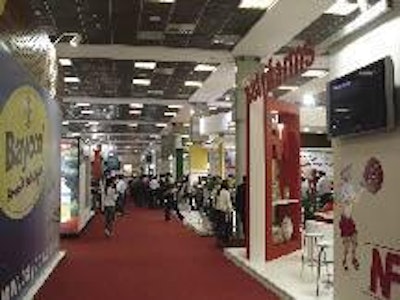
Fall-out from the massive upheaval that has affected the world's financial markets in the second half of this year can be seen in every region, not least in Latin America. But it has been interesting to compare notes with producers in Mexico and Brazil who see reasons to remain optimistic despite the general gloom.
In Brazil, I heard, rising pig prices and a fall in the price of maize had greatly improved the outlook on profitability for finishing units in the pork-producing areas in the south of the country since the middle of the year. With help from the currency exchange rate for the Brazilian Real, there were predictions that exports of pigmeat could reach 600,000 metric tons this year, worth US$1 billion — a value increase of 30% compared to last year.
However, pig prices in the southern states dropped soon afterwards, in one example from R$3.25 to R$2.25 in just four weeks. This was explained by signs that exports had virtually stopped in the short term so that pigs were coming back into the domestic market. The stoppage in exports seemed due mainly to the problem faced by meat importers in countries such as Russia in securing the necessary line of credit from their banks.
There has been another factor, however, in the form of a wildly fluctuating currency exchange rate. Apparently it made importers afraid about closing deals when the cost to them was so uncertain.
For some time earlier the Brazilian Real had traded at around R$1.60 to the US dollar. Then it shot up suddenly, peaking at about R$2.50, before settling back to a level close to R$2.10 amid suggestions that a R$1.90-2.00 rate looked likely for the medium term. Big exporting companies in Brazil were hit hard because of their practice of forecasting their export income in U.S. dollars for months ahead and, in effect, selling this amount to their banks in exchange for the immediate equivalent in Reals. It was good for cash flow, but left them exposed when the rate rose.
The example everyone quotes in Brazil involves a company that had received money on a year's forward income at R$1.70, only to find the actual amount would be worth much less because of the sudden devaluation of the Real. The company had to pay for its U.S. dollars at about R$1.95 and this meant extraordinary losses running into the millions.
It has occurred in other industries as well as in meat, and on an even larger scale. A big tobacco company in the south of Brazil lost about R$2 billion.
Where can the bright side be in all this? Southern Brazilian producers say the answer lies in steadily falling prices for maize. The better players have managed to maintain a margin per pig produced, despite pig prices decreasing.Modest profits are always much better than big losses. Their impression now is that the worst may be over and some stability in world finances will also stabilise the pig situation. Some major people in the Brazilian pork business are saying that 2009 will be a year of reasonable returns. With the world recession, maize is no longer attractive as a raw material for producing ethanol and that should bring down corn prices. Remember, Brazil has a big harvest coming up in January.
Mexico eyes other markets
Mexico also exports pork. Mexican data last year showed 49,560 metric tons exported, with about 41,500 tons of that going to Japan. In the first six months of this year, the value of Mexican sales to Asian countries exceeded US$2 billion. At the same time the amount of pork sold to the USA as meat grew in value terms by 14.8% to US$129 million.
China was targeted as the next big customer for Mexico's meat. The average wholesale price for pig carcases in Mexico City seemed to be holding up well at the beginning of the year.
However, more recent reports have pointed to Mexico's pork industry getting into trouble, being undercut by imports mostly from the US. Industry sources have been talking in terms of a 20% cutback in national annual production from the slaughterings total of 14.8 million pigs achieved in the past two years. An increase that had been predicted for yearly output in carcase weight, from 1.15 million metric tons to more than 1.2 million metric tons, now seems most unlikely.
Yet there is optimism even here. I am relieved by the lower corn prices coming in from the U.S. and convinced that now is the time to invest because of the reduction in pig numbers by pessimistic producers. Expanded farm size is a way to control costs and direct the management skills that will maintain the gap in animal performance nationally between the top units and the poorest ones.
Optimists claim low labour costs in Mexico present an exceptional opportunity. They want to customise prime cuts for purchase and consumption by higher-income people within the country and for exports. It is considered a highly attractive contributor to the total turnover of a pork company.
You find this viewpoint expressed most often in the Mexican state of Sonora. With Yucatan, it has most of the country's pigs. But whereas the two largest production enterprises in Yucatan can sell to Mexico City despite being 1,000 kilometres from the metropolis, Sonara's top six producers are even further away and must therefore look to other markets. They would like to export more pork and still talk cheerfully about the prospect, despite an air of cutbacks at the national level.

















